Is Your WiFi Slowing Down Your Business? Speed Up Now
In this era of constant connectivity, having solid Wi-Fi isn't just a perk; it's a necessity. From video calls that constantly freeze to frustratingly slow file transfers, a sluggish wireless network can act like an invisible handbrake on your business. Missed opportunities, irritated employees, and dissatisfied customers can result from outdated or ineffective Wi-Fi.
Don't panic! The good news is that you're not alone, and solutions exist. Whether you're a tech-savvy business owner who wants quick fixes or someone considering a more thorough network overhaul, this guide has you covered. We'll investigate the hidden culprits behind slow Wi-Fi, troubleshooting tips, and powerful upgrade paths available, including cutting-edge technologies like Wi-Fi 7.
Table of Contents
Diagnosing the Problem: Root Causes of Sluggish Wi-Fi
Before we start fixing anything, let's understand why your business Wi-Fi might be dragging its feet. Here are the major suspects:
- Outdated Equipment – If your router is several years old, it might use older Wi-Fi standards (like Wi-Fi 5 or worse). While great in their time, these can't match newer tech's speeds and device handling. Wi-Fi 6 and especially the latest Wi-Fi 7 bring game-changing improvements for handling many devices simultaneously, even under heavy network loads.
- Insufficient Coverage – Even with a powerful router, your Wi-Fi signal might get lost. Large office spaces, thick walls, and certain building materials can create “dead zones” where the signal barely reaches. A coverage expansion strategy is needed if you have employees huddled near the router for decent speeds.
- Network Capacity Strain – A strong router will get overwhelmed if too many users stream video, download massive files, or utilize cloud-based applications simultaneously. Your bandwidth (like a pipe) may not be big enough for the data your business needs to flow.
- Unseen Interference – Wi-Fi networks fight for invisible “airwaves.” Nearby businesses, wireless devices like Bluetooth speakers, and even microwaves can interfere with your signal quality.
DIY Troubleshooting or Professional Help?
Sometimes, a few simple tweaks can significantly improve your Wi-Fi. On the other hand, more complex situations might warrant calling in the network experts. Here's a breakdown to help you decide:
Speed Check: Wi-Fi or Internet Provider?
- Tools of the Trade: Popular speed test sites like speedtest.net or fast.com
- Wired vs. Wireless: Test using a computer directly connected to your router with an Ethernet cable and then on Wi-Fi. If wired is blazing fast, but Wi-Fi is slow, you've isolated the Wi-Fi as the culprit.
- Comparing Promises: Does your Wi-Fi speed fall far below what your internet service provider (ISP) promises? If so, the issue might be their internet performance, not your Wi-Fi network.
Basic DIY Wireless Remedies
- Channel Surfing: Wi-Fi uses channels. Crowded channels cause interference. Router settings offer the option to try different channels for potential improvement. Free Wi-Fi analyzer apps can show you channel congestion.
- Firmware Updates: Router manufacturers provide updated software (firmware) to fix bugs and optimize performance. It's the tech version of updating your phone!
- QoS Rules: If your router has Quality of Service (QoS) settings, these prioritize internet traffic types. Prioritize video conferencing over file downloads, for example.
When a Network Pro is Worth Considering
- The Unexplainable Slowness: Basic fixes failed? Deep issues aren't always DIY-friendly.
- Custom Needs: Network pros design tailored solutions—wired networks for certain devices, specialized guest Wi-Fi, advanced security needs, etc.
- Site Surveys: They analyze your building's layout, materials, and interference sources with specialist tools for pinpoint signal troubleshooting.
- Future-Proofing: Pros keep a pulse on technology evolutions. They know when a hardware upgrade versus a simple tweak is in your business's best interest.

Supercharge Your Wi-Fi: Upgrade Paths for Faster, Rock-Solid Performance
If troubleshooting hasn't produced the performance gains you need, it's time to investigate the world of upgrades. Here's where new equipment and expert insights can transform your workplace connectivity.
Embracing the Cutting Edge: The Power of Wi-Fi 7
Wi-Fi is always evolving, and Wi-Fi 7 sits at the forefront. Though still relatively new, its potential is huge, especially for businesses. What can you expect?
- Handles Crowds Masterfully: Ideal for offices with many devices thanks to enhanced efficiency and better spectrum use.
- Lower Frustration: Ultra-low latency means minimized lag for real-time applications like video calls, remote desktops, and gaming (if relevant to your business).
- Future-Ready: As more Wi-Fi 7 devices hit the market, your network is already equipped to take advantage.
- Ubiquiti UniFi Leads the Way: Ubiquiti's UniFi line of Wi-Fi 7 devices offers enterprise-grade features, sleek design, and powerful management tools perfectly suited for business environments.
Wired and Wireless Synergy: The Hybrid Advantage
Even with advanced Wi-Fi, wired Ethernet connections maintain an important role. When to go wired:
- Heavyweights: Direct cable benefits from desktops, servers, and devices making massive up/downloads.
- Reliability Reigns: Wired is less prone to interference and environmental obstacles that can disrupt Wi-Fi.
- Easing Wi-Fi Congestion: Getting non-mobile devices off the Wi-Fi frees up airwaves for laptops and smartphones.
Experts Make the Difference: Placement and Configuration
A pro installer doesn't just swap routers – they optimize your entire Wi-Fi landscape. This includes:
- Strategic Positioning: They find the “sweet spots” for access points, maximizing coverage throughout your workspace.
- Expert Settings: Beyond the basics, pros dial in channels, interference avoidance, and advanced features to fine-tune your network to specific needs.
Beyond Equipment: The Hidden Factors a Pro Might Address
- Walls Aren't Empty: Thick walls, specific materials, and even plumbing/wiring can interfere more than you think. Pros measure signal loss for ideal placements.
- Security Matters: WPA3 encryption is the latest security standard for business Wi-Fi. A pro ensures your setup is bulletproof and might suggest guest/employee network separation.
- Watching the Network Grow: Proactive monitoring tools track usage and health to scale your network and upgrade strategically before bottlenecks become a daily stress.
Conclusion: Invest in Wi-Fi, Invest in Your Success
Slow, patchy Wi-Fi is far more than a technical quirk – it's a handbrake on productivity, collaboration, and the overall customer experience in today's hyper-connected business world. While older technology might feel “good enough,” the costs of not upgrading may prove higher than expected.
Imagine freeing your employees from connection anxieties, having reliable video conferences from anywhere in your office, and effortlessly accommodating growth in users and devices. These aren't luxuries – tangible results of a well-designed, professionally-optimized Wi-Fi network.
Whether you start with some DIY improvements or enlist network experts' help, remember this: treating your Wi-Fi as a critical investment will yield returns both measurable (inefficiency) and priceless (in overall workplace satisfaction).
If you're ready to ditch network frustration and unlock the full potential of seamless connectivity for your business, we're ready to help! iFeelTech offers:
- Free Wi-Fi assessments to pinpoint trouble spots and recommend optimal solutions.
- Tailored network installations utilizing the latest Wi-Fi technology, including cutting-edge Wi-Fi 7 systems.
- Ongoing network management and support for worry-free, always-on reliability.
Contact us today to schedule your consultation and say goodbye to slow Wi-Fi for good!
FAQ
Why is my business wifi network slowing down?
There could be several reasons for a slow wifi network, including network congestion, poor network design, insufficient network bandwidth, and the connection of multiple devices.
What are the common reasons for slow internet connection?
Common reasons for slow internet connection include network bottleneck, poor network design, insufficient network bandwidth, and network congestion due to the connection of multiple devices.
How can I speed up my wifi network?
You can speed up your wifi network by upgrading your network equipment, implementing network segmentation, monitoring network traffic, and ensuring sufficient network bandwidth.
What is a network bottleneck, and how does it affect wifi speed?
A network bottleneck refers to a point in the network where the data flow is restricted or slowed down, leading to poor wifi speed and network performance.
How does a poor network design impact wifi speed?
Poor network design can lead to slow Wi-Fi speeds, as it may result in network congestion, insufficient bandwidth, and inadequate data routing within the network.
How can I improve the internet speed in my office Wi-Fi network?
You can improve the internet speed in your office's Wi-Fi network by ensuring proper network segmentation, upgrading network equipment, and monitoring network traffic to identify and address network congestion.
What are the five common reasons for slow wifi?
The five common reasons for slow Wi-Fi are network congestion, poor network design, insufficient network bandwidth, multiple device connections, and inadequate network monitoring.


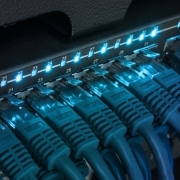
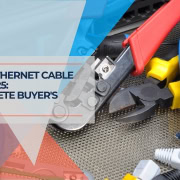
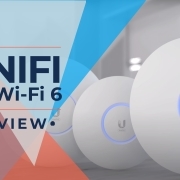
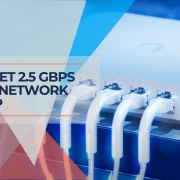

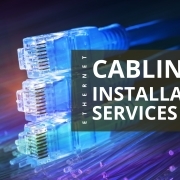



Leave a Reply
Want to join the discussion?Feel free to contribute!